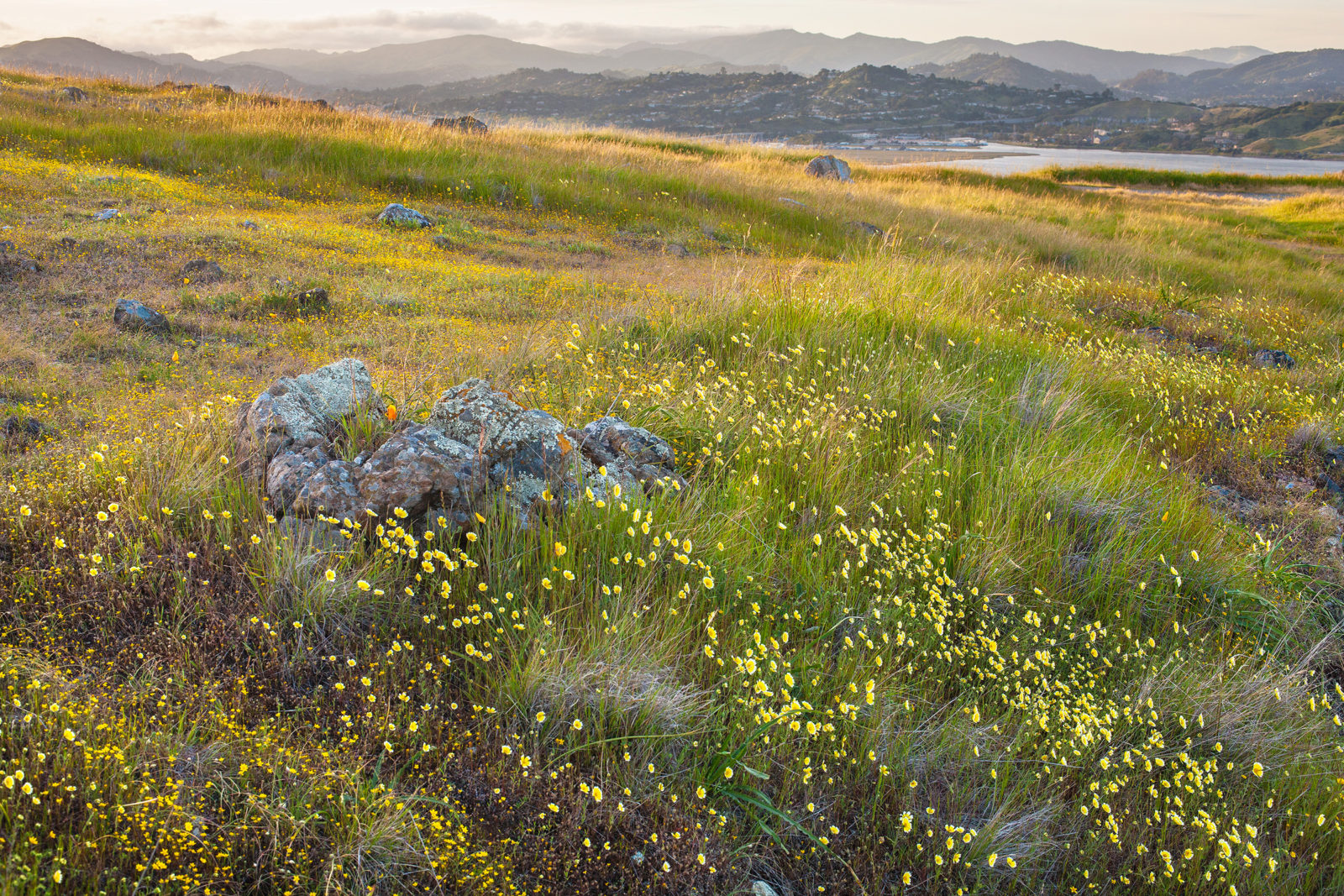Rob Badger began photographing nature and the California desert when he was 18, having moved from the East Coast to Los Angeles for college. Eventually what was a passion and a hobby turned into a career documenting environmental destruction, from clear-cutting to mining. Roughly 25 years after those first photographic forays, a visit to the desert once again shaped his work.
In the spring of 1992, Badger witnessed a wildflower bloom at the Antelope Valley California Poppy Reserve. Amazed at the kaleidoscopic sea of poppies and goldfields, he drove the 350 miles to San Francisco to pick up his partner, Nita Winter, also a photographer, so she could see the multitude of blossoms, too. Badger began to wonder, “What can we do with positive imagery?” rather than constantly focus on loss and ruin. A series of remarkable blooms brought Winter and Badger back to the Mojave Desert again and again, launching a decades-long investigation of wildflowers in the western United States.
Remember, they are an exotic species in the Western United States, and are rapidly increasing their geographic range and range of habitats. Are they outcompeting or excluding native species in the process? How would we know? We have done almost nothing to monitor changes in the assemblage of mushroom species in areas before and and after the incursion of death caps.
Further Reading
Pringle et al, “The ectomycorrhizal fungus Amanita phalloides was introduced and is expanding its range on the west coast of North America,” Molecular Biology 2009
Lockhart et al, “Simultaneous emergence of multidrug-resistant Candida auris on 3 continents confirmed by whole-genome sequencing and epidemiological analyses,” Clinical Infectious Diseases 2017
Battalani et al, “Aflatoxin B1 contamination in maize in Europe increases due to climate change,” Scientific Reports 2016
Beauty and the Beast: California Wildflowers and Climate Change is on view at the Bay Model Visitor Center, in Sausalito, from April 2 to June 1.
As beautiful as blooming wildflowers are, they are not immune to the effects of climate change. Like all native plants, wildflowers adapt to the habitats where they grow. As climate conditions like rainfall and temperature change, some wildflower species may not survive. Scientists monitoring plant diversity at UC Davis’s McLaughlin Reserve found that 15 years of drier winters reduced the diversity of native wildflowers in the reserve’s grasslands between 2000 and 2014.
News like this led Winter and Badger to create Beauty and the Beast: California Wildflowers and Climate Change, a series of exhibitions and a forthcoming coffee-table book featuring approximately 200 photographs and more than 20 essays by conservationists, biologists, and activists. “The whole purpose of our work,” Badger says of this project, “is to use art to inspire hope and action.” The show was first exhibited in 2016 at the San Francisco Public Library, traveled around the state for three years, and is now returning to the Bay Area this spring at the Bay Model Visitor Center in Sausalito, thanks to the Marin chapter of the California Native Plant Society.
The latest version of the exhibit includes some 80 photographs that capture the vibrancy, complexity, and gossamer quality of wildflowers in places like the Merced River Canyon, Joshua Tree National Park, Mount Tamalpais, and Point Reyes National Seashore. The photographs divide roughly into two camps: close-ups of single wildflowers and landscape photographs. Badger speaks of specific flowers as “individuals,” and Winter, who spent much of her early career photographing people, sees similarities in how portraiture can bring out “the spirit” of both people and flowers. “We want to bring people into their world,” she says of the wildflowers.
Winter and Badger’s landscape photographs tell a broader story. An image taken in Marin County’s Ring Mountain Open Space Preserve depicts a cluster of small yellow tidy tips growing atop a rocky yet verdant hill. Distant Corta Madera homes illustrate the wildflower’s proximity to development. “Someone needs to tell a story about every living thing out there,” Badger says, because “all life has value.”
The connection between the exuberant life in these images and climate change isn’t direct. These aren’t pictures of loss, but rather potential loss. Winter and Badger photograph wildflowers almost exclusively on public lands; they want to show viewers the amazing flora that is held in the public trust but which is nonetheless threatened by climate disruption, industrial uses, or reduced protection of natural resources.
Winter and Badger take a painstaking approach to their work, only photographing wildflowers in the wild, sometimes spending as much as an hour and a half on a single flower to ensure the perfect lighting and shadows. While on location they take great care to avoid damaging any of the flowers or surroundings, and if that’s not possible, they move to another location. Likewise, they stick close to trails and roads, essentially writing off photographing locations that might require off-trail traipsing. Ultimately, Winter and Badger put the flowers before their work, speaking to how our current ecological crisis can be solved. As Badger puts it, “Everything on this planet deserves a right to have its own existence fulfilled and to have an environment that supports that.”





